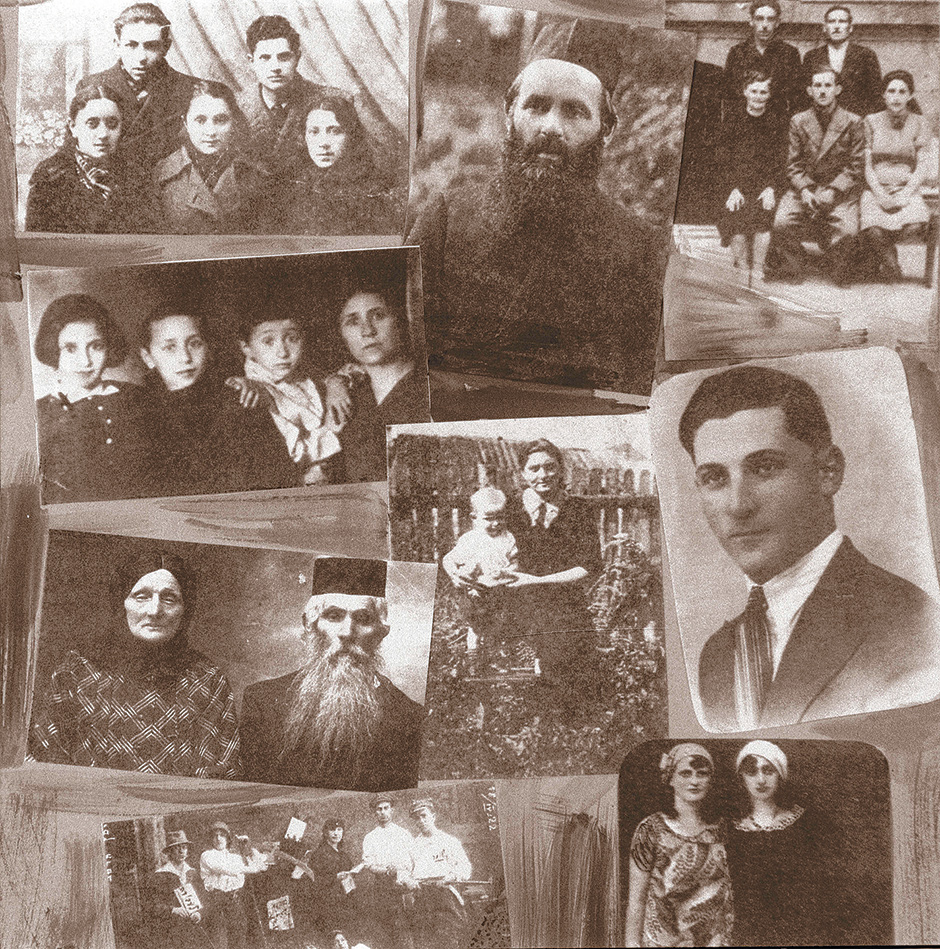In response to:
The Good Place in Vicious France from the December 18, 2014 issue
To the Editors:
Novelist Louis Begley is inaccurate in suggesting that “some fifteen hundred people” were slaughtered and burned in the 1941 massacre at Jedwabne, Poland [“The Good Place in Vicious France,” NYR, December 18, 2014]. Investigation reveals two hundred or a maximum of four hundred.
He references Jan T. Gross’s 2001 best seller, Neighbors: The Destruction of the Jewish Community in Jedwabne, Poland, but avoids Gross’s victim count of “1,600,” which is inaccurate also, yet has become iconic, through many reviews in publications with less standing than The New York Review.
The previous review in the Review, by historian István Deák [May 31, 2001], expressed caution regarding Gross’s account: “No book of history should be treated as Holy Writ, especially not a book which is based on a limited number of documents.”
In contrast, the authoritative study by historian Marek Jan Chodakiewicz contains twenty-four pages of fine-print notes and two appendices: The Massacre in Jedwabne, July 10, 1941: Before, During, After (East European Monographs, 2005). Louis Begley would want to read it, as should any editors offered reference to Neighbors and Jedwabne.
Mr. Begley’s concluding paragraph makes the general accusation that “the Catholic men of Jedwabne,” and “the people of Jedwabne,” perpetrated the crime. “They needed no help from the Germans.”
However, Professor Deák, in his 2001 review in these pages, observed:
The question of German presence leads to another difficult issue, namely why the Jews did not defend themselves. As Gross writes, Jews made up two thirds of Jedwabne’s population. The Poles had no firearms. When some Polish writers raised this question, Jan Gross answered bitterly, arguing that the Jewish heads of families had to look after their wives and children. Yet is it not precisely in defense of their families that people tend to risk their lives? It is well known that, in extremis, some Polish Jews dared to confront even heavily armed SS soldiers; one can ask why the town’s Jewish blacksmiths, for instance, did not grab iron bars to fend off the attackers. They may have been hopelessly outnumbered, but the fact that they did not fight back may also suggest that there were more than a handful of armed Germans present at that time.
The ensuing forensic investigation was terminated abruptly after discovery of German bullets among the corpses, although in response to Orthodox Jewish objection to desecration of the burial site. At his 2003 Colin Miller Memorial Lecture at the University of California, chaired by John Connelly, Professor Gross conceded that the forensic investigation at Jedwabne had been prematurely terminated. “And had it not been prematurely terminated, then we would really know.”
Hence, we do not really know. Marek Jan Chodakiewicz states:
Regrettably, this is our conclusion after an exhaustive, in-depth research of all available material in the case. We can only say with certainty that there is no reason to question the fact that on July 10, 1941, hundreds of Jews were killed in Jedwabne and that the available evidence suggests that the Germans staged the massacre and some Poles assisted them. [p. 147]
Chodakiewicz continues further in his conclusion to suggest the most plausible scenario of the crime in light of the available evidence.
Moreover, and not to be ignored, are orders from Reinhard Heydrich to incite and manage cleansing actions “without leaving any traces [of the German involvement]” (Chodakiewicz, p. 65). We should not wish to be outwitted by dead Nazis.
If the issue persists, then in justice the forensic examination should be reopened and properly concluded.
Gordon Black
Chair, Committee for Education
The Polish American Congress
Northern California Division
Danville, California
Louis Begley replies:
It should have been obvious to Mr. Gordon Black that the contrast I drew between, on the one hand, the goodness of the people of the Vivarais-Lignon plateau, who saved the lives of a very large though indeterminate number of Jews taking refuge with them as well as the lives of other undesirables hunted by Germans, and, on the other, the depravity and cruelty of the Catholic men of Jedwabne, who tortured, slaughtered, and burned alive their Jewish neighbors, does not depend on the number of Jews killed in Jedwabne. I said “some fifteen hundred”; Mr. Black claims that “investigation reveals” two hundred or a maximum of four hundred. He may be right. In fact, Professor Jan T. Gross, in his afterword to the 2002 edition of his Neighbors: The Destruction of the Jewish Community in Jedwabne, Poland, does not insist on the victim count of 1,600 to which Mr. Black objects. Instead, he makes the point that exposes the shabbiness of Mr. Black’s quibble: “The character as well as moral and historical implications of the Jedwabne mass murder remain exactly identical, no matter whether 400 people or 1600 were killed there” (p. 121).
Advertisement
Mr. Black objects also to my “general accusation” that the Catholic men of Jedwabne did the killing, and “needed no help from the Germans.” Along the way, he disregards my statement, based on Professor Gross’s book, that “apparently some of the ringleaders had been told by German policemen that the time had come for a massacre of the Jews,” although he quotes me correctly as saying that the men of Jedwabne needed no help from the Germans. It so happens that both Professor Gross’s assertion and mine as to the perpetrators of the Jedwabne pogrom accord with the conclusions of the Polish Institute of National Remembrance (Instytut Pamięci Narodowej). The IPN’s report of the commemoration, on July 10, 2013, of the seventy-second anniversary of the “pogrom of the Jewish inhabitants” (emphasis added) of Jedwabne states in relevant part:
According to the conclusions [of the judicial investigation in Bialystok terminated in 2002] in July 1941 were killed in Jedwabne at least three hundred Jewish inhabitants of that small town. The perpetrators of this crime—a group of about forty Polish inhabitants of Jedwabne and its surroundings—were inspired to commit it by Germans.1
As bidden by Mr. Black, I have perused Marek Jan Chodakiewicz’s monograph with its “twenty-four pages of fine-print notes and two appendices.” Chodakiewicz disagrees with the IPN’s view and concludes that “enough of the willing perpetrators, about twenty local Poles, were in a state of frenzy, high enough to provide the Nazis with the necessary manpower to assist in carrying out the massacre in Jedwabne” (p. 174). He avoids calling it a pogrom, and his real purpose is to shift the blame from Poles to Germans:
Despite the few who resisted by fleeing [sic in the text!], the Jews of Jedwabne did not resist. Why? The active presence of armed Germans was certainly the chief factor. Only the Nazi police could have instilled so much fear into the Jews of Jedwabne that they did not fight back from the outset. After all, they knew their Polish neighbors very well and were not intimidated by them either before the war or during the Soviet occupation. Why should they have become paralyzed with fear before the Poles now? Jews, young male adults in particular, certainly knew very well and had a long tradition of self-defense. Had the massacre in Jedwabne been an exclusively Polish affair, the Jews of Jedwabne would have defended themselves immediately. However, because it was inspired, supervised, and carried out by the Germans, albeit with some Polish assistance, the Jewish population was paralyzed into inaction. [p. 175; emphasis added]
Amusingly, Chodakiewicz seeks to validate his speculations by the canard, also launched by Mr. Black, that nests in the otiose musings of István Deák, Chodakiewicz’s “original dissertation adviser” at Columbia University, toward the end of his review of Neighbors,2 about a “difficult issue,” to wit why didn’t the Jews of Jedwabne defend themselves when their Catholic neighbors, armed with clubs, knives, farming tools—whatever came to hand—came to murder them. Why didn’t the Jewish blacksmiths, Professor Deák helpfully asks, “grab iron bars to fend off the attackers”? The answer he posits is that the Germans, who had firearms, did the killing, and not the Poles. For all I know, Professor Deák and Mr. Black are triathlonists or martial arts experts, and each of them feels confident about his ability to fend off, with an iron bar or two, hate-crazed neighbors bent on massacring him and his wife and children. Alas, these shtetl Jews didn’t have the right stuff. What’s more, they might have had trouble getting hold of those iron bars for, according to Chodakiewicz, the blacksmiths in Jedwabne were Christian (p. 30).
It may be Mr. Black’s job as an official of the Polish American Congress to take up arms whenever he thinks that Poland is traduced. But Polish history is what it is. Trying to burnish it by explaining away or blaming on others pogroms such as those in Jedwabne in July 1941 or in Kielce in July 1946, or by denying the endemic virulent anti-Semitism that made the great majority of Catholic Poles at best indifferent to the slaughter by Germans of Jewish Poles during World War II, is both undignified and foolish.
-
1
My translation from the original Polish. For the report, see http://ipn.gov.pl/aktualnosci/2013/bialystok/udzial-delegacji-ipn-w-uroczystosciach-rocznicowych-w-jedwabnem-jedwabne,-10-lipca-2013. ↩
-
2
Chodakiewicz recounts that “I shared my reservations [about Professor Gross’s book] with [Professor Deák] and also promised to write an essay for his reference. Later Professor Deák positively acknowledged my contribution to his review” (p. 2). ↩




